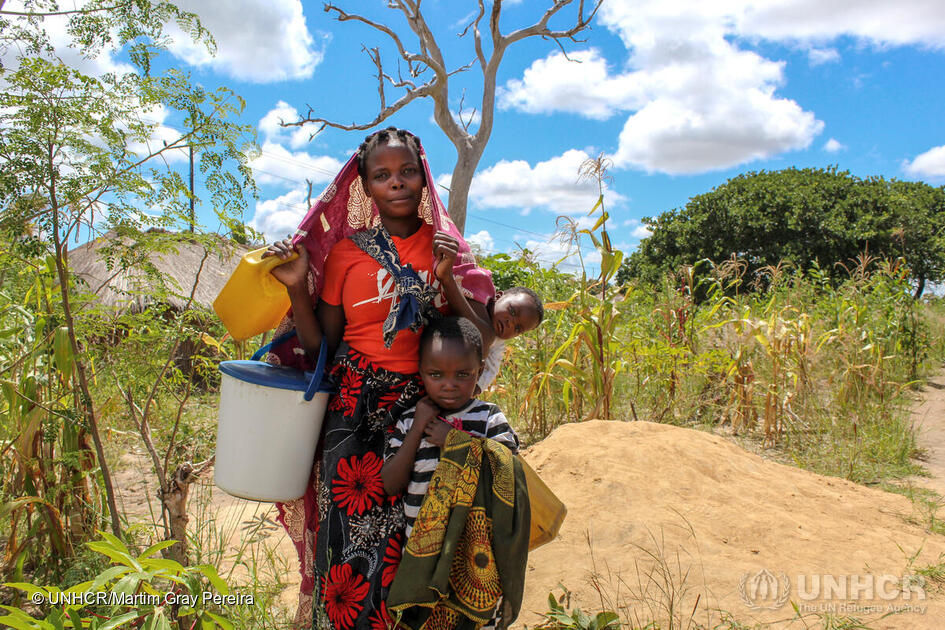Mid-Year Trends
Forcibly displaced populations*
In the first half of 2021, millions more people were forced to flee their homes due to armed conflicts, generalized violence or human rights violations. Many of them faced additional challenges due to COVID-19, disasters, extreme weather and other effects of climate change.
As the 2021 Mid-Year Trends report outlines, UNHCR estimates that global forced displacement has likely exceeded 84 million by mid-2021, a sharp increase from the 82.4 million reported at end-2020.
*The term forcibly displaced people encompasses refugees, asylum-seekers, internally displaced people and Venezuelans displaced abroad. It includes refugees and other displaced people not covered by UNHCR’s mandate and excludes other categories such as returnees and non-displaced stateless people. Learn more about the definition here.
Main countries of origin for international displacement at mid-2021
Refugees and asylum-seekers
By end of June 2021, the number of refugees under UNHCR’s mandate had surpassed 20.8 million, which is 172,000 people more than at the end of 2020. More than half of new recognitions were from five countries: the Central African Republic (71,800), South Sudan (61,700) Syria (38,800), Afghanistan (25,200) and Nigeria (20,300). In the same period, there were 92,100 newly displaced Venezuelans in Latin America and the Caribbean.
The number of asylum-seekers had climbed to 4.4 million, compared to 4.1 million at the end of 2020.
Internally displaced persons
UNHCR continues to respond to situations of internal displacement in 33 countries. By mid-2021, due to conflict and violence, the number of internally displaced persons had risen to nearly 50.9 million. Intensifying violence led to significant new displacements in Afghanistan, the Democratic Republic of the Congo, Ethiopia, Mozambique, Myanmar, South Sudan and countries in the Sahel region, among other locations.
Internally displaced persons of concern to UNHCR from 2010 to mid-2021
The Covid-19 pandemic
The Covid-19 pandemic has brought new challenges for countries as well as for displaced populations. The transition by governments from attempting to contain the spread of COVID-19 to living with it was made possible primarily by the rollout of vaccination programmes. For UN Secretary-General António Guterres, the global vaccination campaign represented "the greatest moral test of our times".
It is encouraging that almost all countries have included refugees, asylum-seekers and others in need of international protection in their national COVID-19 vaccination plans.
Nevertheless, resources are still needed for immunization-related activities and to ensure last-mile vaccine delivery.
Finding solutions
Returning home in safety and dignity based on a free and informed choice remains the preferred solution for most of the world's refugees. While the number of returnees did increase compared to the same period of 2020 (both refugees and internally displaced people), it remained well below pre-COVID-19 levels during the same period of 2019.
In the first half of 2021, an estimated 126,700 refugees returned to 23 countries of origin from 41 countries of asylum. Some of these returns were facilitated by UNHCR and its partners, while others were self-organized. As shown on this chart, most returnees in the first half of 2021 were South Sudanese returning primarily from Sudan, Ethiopia and Uganda:
Refugee returns to their home country at mid-2021
As emphasized in the Global Compact on Refugees, identifying and supporting durable solutions that enable refugees to rebuild their lives is a strategic priority for UNHCR and the humanitarian community. Traditionally, durable solutions include voluntary repatriation, local integration and resettlement to a third country, and legal status in refugees' countries of asylum. However, as has been the case for several years, only a tiny fraction of displaced populations were able to find a safe and lasting solution in the first half of 2021.
The figures presented here were collected from governments and UNHCR offices worldwide and supplemented, where needed, with data from non-governmental organizations. Unless otherwise specified, figures relate solely to events occurring up to 30 June 2021.

